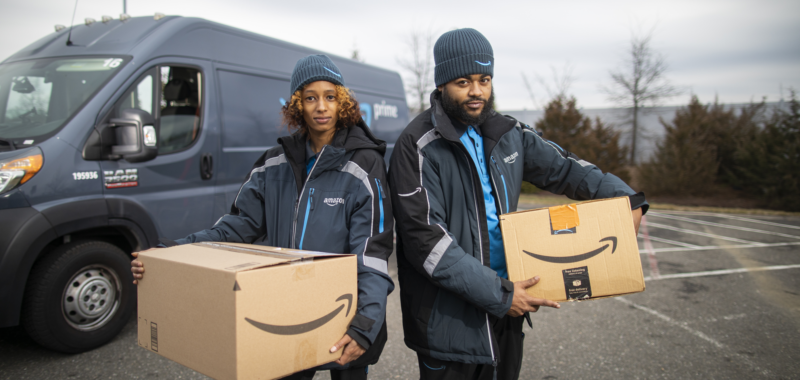It’s making incredible progress throughout its empire of businesses.
The market gave Amazon (AMZN -0.89%) a nice round of applause last week when it reported phenomenal third-quarter earnings. It’s hard to believe that only two years ago, it lost half of its value, and it’s still recovering — it’s up only 13% over the past three years.
Investors are enthusiastic about Amazon again. Since its fall in the last bear market, it has unveiled a massive generative artificial intelligence (AI) business that’s growing at triple digits. Once again, Amazon is dominating a new industry. Where can investors expect Amazon to be in five years?
The generative AI revolution
All eyes are on Amazon’s AI capabilities. Generative AI has unlocked incredible ways for businesses to work faster and more cost-effectively, with services they couldn’t have imagined a few short years ago. Amazon offers generative AI solutions for its Amazon Web Services (AWS) customers, and it hasn’t stopped rolling out new services, improvements, and solutions to meet every need and budget.
That’s one of its strengths compared to other providers — when Amazon goes into something new, it goes big, and tries to be everything to everyone. Most companies can’t get away with that and do better filling a niche. Amazon is the rare company that doesn’t need a niche.
There are hidden benefits, too. Management has noted several times that 90% of company information technology spend is still not on the cloud, as fast as it’s growing. Those kinds of business overhauls take time, but CEO Andy Jassy thinks it’s going to flip.
But whenever such overhauls pick up momentum, it would be a watershed moment for Amazon. It might be starting: As companies see what generative AI is doing, they’re realizing that they need to be on the cloud to make the most effective use of the solutions. That’s affecting AWS overall, and AWS sales accelerated to a 19% increase in the third quarter.
Jassy noted that the generative AI business is growing at triple-digit rates, reaching a multi-billion-dollar run rate, and is outperforming where AWS was at this phase of development. The potential is really massive, and in five years from now, it could be accelerating as more clients join AWS and existing clients expand their relationships.
No slowing down in e-commerce
As exciting as the AI revolution is, investors shouldn’t forget about e-commerce for one moment. It’s still Amazon’s core business, providing the engine it needs to run the total business and invest in all its segments.
Amazon restructured its logistics network last year from a national to a regional one, and it’s still realizing the benefits in faster deliveries and lower fulfillment costs.
It’s working on improving its inbound inventory chain, making sure that regional warehouses have products on hand, and its ability to move inventory throughout its regional distribution centers improved by 25% in the third quarter. It opened more same-day fulfillment centers in the quarter, and same-day deliveries were sent to more than 40 million customers, a 25% increase year over year.
The company also opened its highest-tech distribution center in Louisiana, where it’s piloting its newest robotics systems, and it improved delivery speed by 25%. It’s expected to cut costs by 25% as well.
That’s just one center. As it rolls out the technology throughout the U.S., it should continue to improve delivery times and shave off costs.
In five years from now, Amazon should have faster delivery speeds while cutting down costs. As Prime members become even more reliant on its platform, it could capture greater market share, generating higher revenue. Amazon could even overtake Walmart as the largest U.S. company by sales.
Making progress all around
Amazon has developed a competitive advertising business that’s been reporting robust sales growth. It’s bringing all its AI and data analytics capabilities to the ad business, such as the ability to create a video from a product image. It has been Amazon’s fastest-growing business for some time, but with the reacceleration in AWS, they tied in the third quarter at 19%.
There’s a long growth runway here as Amazon now offers advertisements throughout its vast multi-platform empire, including the e-commerce site, audio, and video.
It’s also making progress in Amazon Pharmacy. 90% of prescriptions are still filled at physical pharmacies, and most online pharmacies get orders to customers in five to 10 days. Amazon can get orders to customers within two days for 95% of Prime members, and within one day for 20%. It plans to open operations in 20 new cities over the next year.
Amazon is known for its acquisitions and attempts at new business. Right now, it looks like that engine is focused on AI. In five years, it could still have its hands full with the businesses it’s already running.
Amazon stock jumped after earnings and is up 30% this year. In five years, it’s likely to keep that up and provide solid value to long-term investors.
John Mackey, former CEO of Whole Foods Market, an Amazon subsidiary, is a member of The Motley Fool’s board of directors. Jennifer Saibil has no position in any of the stocks mentioned. The Motley Fool has positions in and recommends Amazon and Walmart. The Motley Fool has a disclosure policy.

